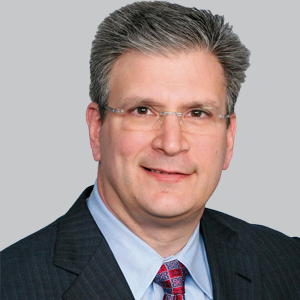News
Video
Episode 2: Innovative Policies That Advance Women in Neurology Departments
Author(s):
A group of empowering women leaders in neurology explore the transformative impact of women neurologists on the medical workforce and the strides toward a more inclusive neurology field.
Women have made significant strides in neurology, bringing unique perspectives and innovations to the field. Historically underrepresented, women neurologists have worked to break barriers, advocate for inclusivity, and address issues like work-life balance and equitable opportunities. Their leadership has driven changes such as flexible scheduling, support for family responsibilities, and expanded resources for women’s health-related neurological issues. As more women enter neurology, their impact continues to grow, enriching the profession with diverse voices and approaches to patient care.
In collaboration with the Association of University Professors of Neurology (AUPN), NeurologyLive® convened a panel of several empowering women in neurology to discuss notable topics related to women involvement in the field. Among them included Carlayne Jackson, MD, FAAN, current president of the American Academy of Neurology, Vanessa Hinson, MD, PhD, a professor of neurology and a movement disorder specialist at the Medical University of South Carolina, in Charleston, and Marie Eugene, DO, an associate professor in the Department of Neurology at the University of Connecticut.
In this conversation, neurologists Dr. Charlayne Jackson, Dr. Vanessa Hinson, and Dr. Marie Eugene discussed the institutional changes needed to support and empower women in neurology. They highlighted ongoing challenges such as salary inequity, lack of opportunities for part-time faculty, and limited access to national speaking engagements, which are crucial for career advancement. They shared successful strategies from their own institutions, including transparent salary policies, tailored career tracks for part-time providers, regular promotion-focused meetings, and initiatives like a women speakers list to promote visibility and leadership opportunities. Together, their insights emphasized the importance of fostering inclusivity, advocating for equity, and creating structured support systems to empower women in the neurology workforce.
Marco Meglio: What institutional changes do you believe are necessary to support and promote women in neurology? Are there things you've seen in your department or others that have been successful in creating a more inclusive, empowering, and effective environment?
Carlayne Jackson, MD: I think, globally—and certainly within the United States—there continues to be salary inequity. The Academy conducts a productivity and compensation survey every two years, and there was a paper published in 2022 based on 2019 data. While it’s a bit outdated, that study confirmed that women made about 10.9% less than men. So, in terms of institutional policies, at the Health Science Center, we’ve implemented salary transparency. Salaries are based on median national benchmarks, specifically from the AAMC. For example, if you're an assistant professor in neurology, you know what your salary will be because it’s tied to those median benchmarks. Hopefully, this transparency will help minimize that challenge.
Vanessa Hinson, MD, PhD: What I think is important for attracting more women into neurology—and especially into leadership positions—is to make part-time career paths more viable. Right now, part-time physicians, particularly women, are often sidelined. They’re allowed to see patients on a few days but aren’t truly integrated into the academic faculty, and that really needs to change. At my institution, we’ve developed a modified clinical track for part-time providers, making promotion not only possible but realistic. This ensures that part-time providers don’t get stuck at the assistant professor level and penalized for having a family or wanting a work-life balance, while still being committed to neurology. Women in leadership need to advocate for junior faculty and push for equality in the academic weight of part-time and full-time providers.\
Marie Eugene, DO: At my institution, our department chair meets with faculty twice a year to discuss progress towards promotion. They review the promotion criteria, evaluate where you currently stand, and collaborate on a plan to leverage your daily activities to build your promotion portfolio. I’ve found this proactive approach really helpful—it gives you clear steps and guidance on how to progress in your career.
Carlayne Jackson, MD: Another issue we recognize is that women are less likely to be invited to present at other institutions. To address this, our Advancing Women in Neurology Subcommittee created a speakers list of women speakers, which is now available on the website. If an institution is looking for a speaker, they can browse the list, view topics the speakers are comfortable presenting, and even find links to past presentations. This initiative promotes women not just within their own institutions but across others as well. As we know, achieving national recognition—like presenting at other institutions—is critical for promotion, particularly to the professor level. This list is one way we’re working to support and elevate women in the field.




